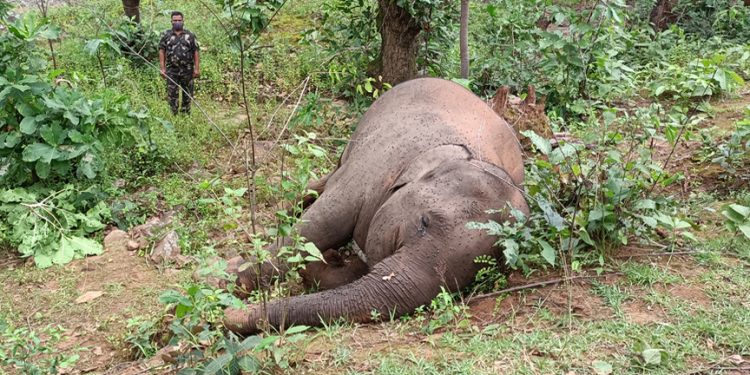New Delhi: As many as 2,381 people and 490 elephants have died in India from 2015 to 2018, according to a compendium published by the Ministry of Environment, Forest and Climate Change Friday.
“Similarly, between 2000 and 2010, 0.5 million households have suffered annual losses due to crop raiding by elephants,” according to the compendium titled ‘Human Elephant Conflict (HEC) in select states of India’, released in Dehradun Friday.
Environment Minister Bhupender Yadav was in Dehradun to chair the 16th steering committee meeting of Project Elephant at the Forest Research Institute (FRi) where various aspects related to elephant conservation were discussed.
Yadav also released the preliminary report on ‘Human-Elephant Conflict’ (HEC), and a booklet titled ‘Trumpet’, a quarterly publication of Project Elephant division of the Environment Ministry.
The compendium stated that in spite of multi-pronged efforts, conflicts between elephants and people seem to be intensifying.
“(However), there is now an increased recognition that conflict resolution cannot be a one-off effort, but a continuous and sustained endeavor of learning and implementing different strategies over longer period of time. Although human-elephant conflict is one of the most well researched topics in both conservation biology and management in India; many questions beg satisfactory answers so as to devise lasting solutions to the problem,” it said.
With an objective of making the HEC database readily assessable for policymakers and field managers, Project Elephant Division along with the Elephant Cell of Wildlife Institute of India (WII) embarked on the task of mapping HEC across the country.
In this report, preliminary details on HEC pertaining to seven elephant range states of India have been pictorially depicted and broad trends presented.
The report also identified new challenges such as elephant dispersal into human-dominated areas, rapid landuse transformation around elephant habitats, and sustained economic and infrastructure development related pressures that fragment, isolate and degrade elephant habitats, consequently resulting in human-elephant conflicts.
“The spatial relationship between elephants, people and associated socio-economic factors influences the occurrence and severity of human-elephant conflict,” it observed.
The field manual is developed by WWF India, which is a handbook for forest staff working in key elephant landscapes across Tamil Nadu, Kerala, Karnataka, Bengal, Assam and Uttarakhand.
“Human-elephant conflict is an area where we need to collaborate with all the stakeholders to save the lives of both humans and elephants. The efforts to bring out the field manual with WWF India and WII is such an endeavour, which I am sure will be a good tool for field officials to use in mitigating different HEC situations,” said Ramesh Pandey, IG, Project Elephant.






































